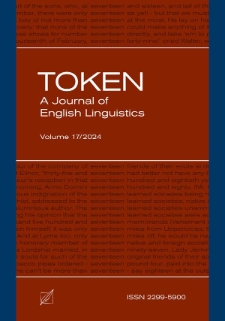Digital Library of the Jan Kochanowski University contains 13 083 digital objects
Object
Title: Pinocchio and its lasting legacy : A study across adaptations and dubbings
Creator:
Group publication title:
Contributor:
Newman, John G. Ed. ; Dossena, Marina. Ed. ; Ranzato, Irene. Guest ed. Valleriani, Luca. Guest ed.
Abstract:
This paper analyses how Italian culture is represented and translated through dubbing in three cinematic adaptations of Carlo Lorenzini’s Italian classic, Le Avventure di Pinocchio (1881/1993). The first adaptation examined was the animated film produced by Walt Disney, which brought fame to the story in the US and was dubbed from English into Italian in 1947. Then, the 2002 feature-film Italian adaptation directed by Italian actor Roberto Benigni, who also starred as the wooden puppet. The dubbing from Italian into English of this film was carried out by the American distributor and employed the voices of famous English-speaking actors. Finally, the latest 2019 Italian film adaptation, directed by Matteo Garrone, was dubbed from Italian into English using Italian actors speaking in English, as requested by the director himself. The analysis demonstrates how Disney’s Pinocchio minimises cultural references to Italy and to the source novel, which the Italian dub partially reinstalls. Benigni’s work is rich in cultural references to Italy, specifically in the protagonist’s idiolect. However, the English dubbing was highly domesticating, removing much of the Italianness of the original and was harshly criticised by film critics and international audiences. Garrone’s adaptation carefully preserves the cultural identity and authenticity of the source text, even from a nonverbal perspective. The English dubbing adopts a foreignising perspective, reflected not only in the Italianised English spoken by the dubbing actors but also in the translation choices that foreground references to Italian culture (e.g., through loan words) wherever possible.
Table of contents:
Contents
Irene Ranzato and Luca Valleriani – To make you see: Linguistic and translational insights in audiovisual literature (Introduction) 5
Agata Hołobut and Monika Woźniak – Jane Paraphrased: Insights into dialogue-writing techniques in two BBC adaptations of Pride and Prejudice and their Polish translations 19
Filippo Saettoni – A diachronic analysis of apologies and thanks in five Little Women adaptations and their Italian dubbings 59
Giovanni Raffa – “The (video)game is afoot”: Subtitling deductions in Sherlock Holmes’s adaptations 83
Olaia Andaluz-Pinedo – Beyond performance: Spanish audiovisual translations of The Crucible 105
Patrick Zabalbeascoa – A case for rewriting Lolita 129
Davide Passa – La Cage Aux Folles: The use of Gayspeak in the English, French and Italian adaptations for the big screen 151
Ilaria Parini – “Ayuh!”: Stephen King’s accented characters go to the cinema 169
Montse Corrius Gimbert, Eva Espasa Borrás and Laura Santamaria Guinot – Deborah Feldman’s story in Unorthodox: Transformation through language variation and music 193
Silvia Bruti and Gianmarco Vignozzi – Pinocchio and its lasting legacy: A study across adaptations and dubbings 215
Place of publishing:
Physical description:
ISSN:
Publisher:
Jan Kochanowski University Press
Date issued:
Identifier:
oai:bibliotekacyfrowa.ujk.edu.pl:13318 doi:10.25951/13703
Language:
Is part of:
Token : A Journal of English Linguistics
Has part:
Type:
Access rights:
Format:
Object collections:
- JKU Digital Library > University Publishing
- JKU Digital Library > University Publishing > Serial publications
- JKU Digital Library > University Publishing > Serial publications > "Token : A Journal of English Linguistics"
Last modified:
Jul 14, 2025
In our library since:
Jul 11, 2025
Number of object content hits:
130
All available object's versions:
https://bibliotekacyfrowa.ujk.edu.pl/publication/13703
Show description in RDF format:
Show description in OAI-PMH format:
| Edition name | Date |
|---|---|
| Bruti, Silvia; Vignozzi, Gianmarco, Pinocchio and its lasting legacy: A study across adaptations and dubbings | Jul 14, 2025 |
Objects Similar
Vignozzi, Gianmarco Newman, John G. Ed. Dossena, Marina. Ed. Shvanyukova, Polina. Ed. Bianchi, Francesca. Guest ed. Bruti, Silvia. Guest ed. Cappelli, Gloria. Guest ed. Manca, Elena. Guest ed.
Bruti, Silvia Newman, John G. Ed. Dossena, Marina. Ed. Shvanyukova, Polina. Ed. Bianchi, Francesca. Guest ed. Bruti, Silvia. Guest ed. Cappelli, Gloria. Guest ed. Manca, Elena. Guest ed.
Bianchi,Francesca Bruti, Silvia Cappelli, Gloria Manca, Elena Newman, John G. Ed. Dossena, Marina. Ed. Shvanyukova, Polina. Ed. Bianchi, Francesca. Guest ed. Bruti, Silvia. Guest ed. Cappelli, Gloria. Guest ed. Manca, Elena. Guest ed.

